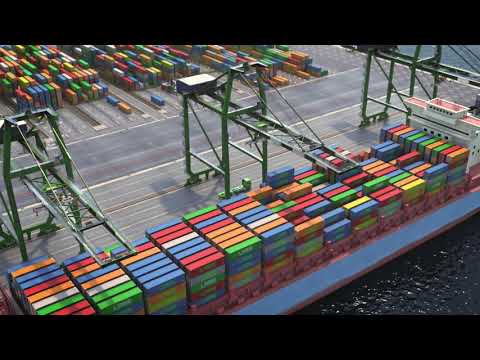LaseLCPS-STS-3D
Load Collision Prevention System
The LaseLCPS-STS-3D - Load Collision Prevention measurement system enables 3D collision prevention of containers at the spreader of an STS crane with containers on a container ship.
The Measuring System
The use of robust and modern LASE laser technology aims to reduce the risk of accidents during loading operations of STS cranes and prevent collisions of container cargo on the ship.
The measurement system consists of three 2D laser scanners of the LASE 2000D series, which are mounted positioned under the crane trolley. All laser scanners are aligned to the ground, whereof two scanning planes extend parallel to each other across the row of containers in the direction of trolley travel. Another scanning plane is aligned transverse to the trolley travel direction.
When the trolley passes over the ship, the measurement system generates a 3D profile. This is used to avoid collisions in the container row and adjacent containers.
In addition, the spreader is always in the field of view of the laser scanners. By comparing the current load position (spreader with/without container) with the profile of the container stacks on the ship, collision avoidance is guaranteed. The LaseLCPS-STS-3D measurement system also records the longitudinal displacement of the ship and detects catwalks and cell guides. The application software evaluates the scan data measured by the scanner, performs calculations and sends the results to the crane PLC.
The LaseLCPS-STS-3D measurement system is primarily designed for STS crane operations and serves to increase both safety and an efficient container handling workflow. This innovative solution serves to reduce the risk of collisions and accidents during the loading and unloading of ships. In addition, with the so-called soft-landing function, the system serves to gently set down containers and spreaders, which means a reduction in noise and reduced wear.
When the trolley passes over the ship, the measurement system generates a 3D profile. This is used to avoid collisions in the container row and adjacent containers.
In addition, the spreader is always in the field of view of the laser scanners. By comparing the current load position (spreader with/without container) with the profile of the container stacks on the ship, collision avoidance is guaranteed. The LaseLCPS-STS-3D measurement system also records the longitudinal displacement of the ship and detects catwalks and cell guides. The application software evaluates the scan data measured by the scanner, performs calculations and sends the results to the crane PLC.
The LaseLCPS-STS-3D measurement system is primarily designed for STS crane operations and serves to increase both safety and an efficient container handling workflow. This innovative solution serves to reduce the risk of collisions and accidents during the loading and unloading of ships. In addition, with the so-called soft-landing function, the system serves to gently set down containers and spreaders, which means a reduction in noise and reduced wear.
General Features
3D and 2D container profiling
Detection of longitudinal displacement of the vessel
Cell guide and catwalk detection
Collision protection between containers on spreaders and container stacks on ships
Collision protection between spreader and container stacks on ships
Collision protection to adjacent container bays
Gentle container handling by soft landing
Check of stack topography in cross travel direction
Lower spreader wear and reduction of noise emissions
Driver assistance
